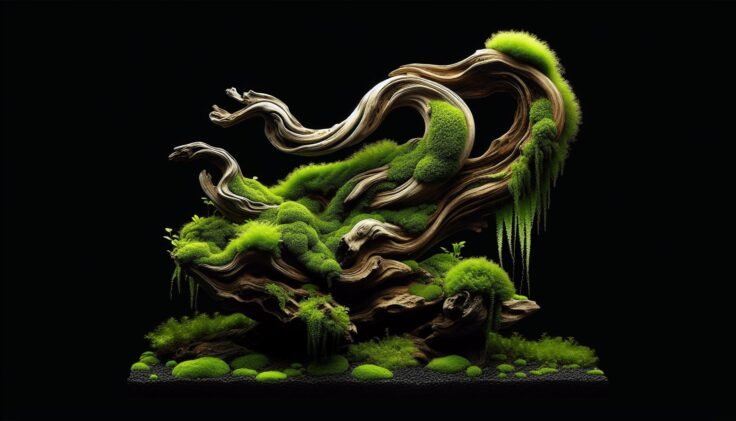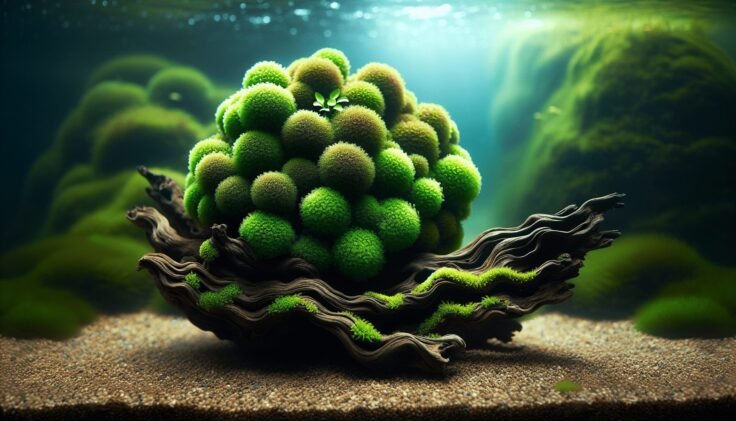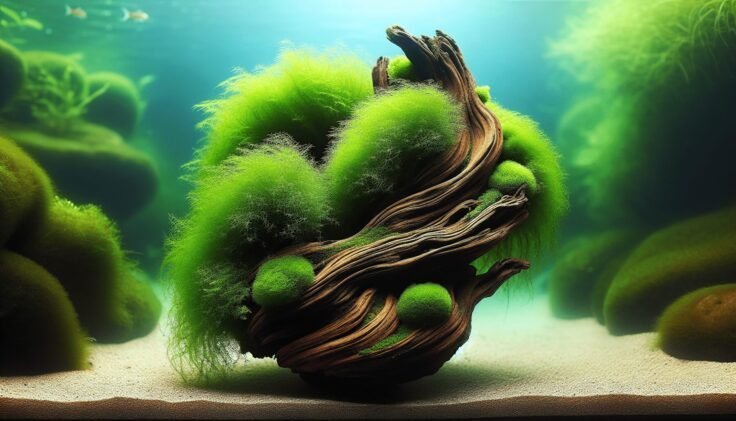Have you ever considered integrating natural elements into your aquarium’s design? If so, incorporating Java moss and driftwood might be the perfect combination to enrich your underwater environment. Not only is Java moss driftwood aesthetically pleasing, but it also provides numerous benefits for your aquatic life.
What is Java Moss?
Java moss, a staple in the world of aquascaping, is a versatile and hardy aquatic plant. This species is scientifically known as Taxiphyllum barbieri and is native to Southeast Asia. It is renowned for its ability to thrive in a variety of water conditions, making it an excellent choice for novice and experienced aquarium enthusiasts alike. With its vibrant green color and soft texture, Java moss can transform your aquarium into a lush and natural habitat.
Benefits of Java Moss
Java moss offers a plethora of advantages for your aquarium. Firstly, it serves as a natural filtration system. By absorbing nitrates and other toxins, it helps improve water quality, promoting a healthier environment for your fish. Moreover, Java moss provides shelter and breeding grounds for fish and shrimp. Its dense foliage is perfect for hiding fry and eggs, increasing their chances of survival.
How Java Moss Thrives
One of the reasons Java moss is so favored is due to its adaptability. It requires minimal lighting and can thrive in a wide range of water temperatures, typically between 59°F to 86°F (15°C to 30°C). The plant attaches easily to surfaces, such as rocks, driftwood, or substrate, and does not necessitate nutrient-rich substrates as many other aquatic plants do.
What is Driftwood in Aquariums?
Driftwood is another key element in underwater landscaping. Originating from branches and roots that have been weathered by water and time, driftwood introduces both an artistic touch and functional benefits to your tank.
Types of Driftwood
There are various types of driftwood you can choose from, each bringing its own unique attributes to your aquarium:
| Type | Characteristics |
|---|---|
| Malaysian Driftwood | Dark, dense, and sinks easily without treatment. |
| Mopani Driftwood | Two-toned with a twisty shape and natural tannins. |
| Cholla Wood | Hollow and porous, suitable for small fish and shrimp. |
| Spider Wood | Intricate, branchy structure perfect for climbing. |
Benefits of Driftwood
Driftwood is not merely decorative. It releases tannins into the water, which can slightly lower pH levels, thus creating optimal conditions for many types of fish. Additionally, it acts as a habitat and provides shelter, reducing stress for the aquatic creatures living in your tank. The surface of driftwood is also ideal for the growth of beneficial bacteria, contributing to the tank’s biological filtration.

Integrating Java Moss and Driftwood
Combining Java moss and driftwood harmonizes aesthetics and functionality in your aquarium. When Java moss attaches to driftwood, it creates a natural, seamless look, mimicking the underwater landscapes found in nature. This combination also fosters an ideal environment for your aquatic pets.
Preparation of Java Moss Driftwood
Before you integrate Java moss with driftwood in your aquarium, certain steps should be taken:
Cleaning Driftwood:
- Boil or soak the driftwood to remove any impurities and avoid discoloration of your aquarium water from excess tannins.
Attaching Java Moss:
- Use fishing line or cotton thread to secure Java moss onto the driftwood. Tie it snugly, as the moss will gradually attach itself as it grows.
Final Placement:
- Position the driftwood strategically in your aquarium, considering both aesthetics and functionality, such as creating hiding places or swim-throughs for fish.
Caring for Java Moss Driftwood
Once set up, caring for your Java moss driftwood is straightforward. Regular maintenance ensures your aquascape remains healthy and vibrant.
Maintaining Java Moss
Java moss requires occasional trimming to prevent it from becoming too dense. Trimming also encourages growth and maintains a tidy appearance. Make sure to remove any algae that might accumulate, as it can outcompete your moss for nutrients and light.
Maintaining Driftwood
Driftwood maintenance largely involves monitoring water parameters. Keep an eye on the tannin levels, which can make your water tea-colored. Regular water changes can help manage this effect. If algae start to grow on the driftwood, gently scrub it off with a soft brush.

Troubleshooting Common Issues
Even with the heartiest of setups, issues can still arise. Here’s how you can address common problems:
Algae Overgrowth
Algae are notorious for growing on Java moss. To manage this, reduce the lighting duration and consider introducing algae-eating species to your tank, like Amano shrimp or Siamese algae eaters.
Moss Turning Brown
If Java moss begins to turn brown, it may be due to inadequate lighting or water quality issues. Ensure your tank receives enough light and check nutrient levels in the water, adjusting accordingly.
Driftwood Fungus
A white, fuzzy fungus can sometimes appear on new driftwood. This is quite common and usually harmless. It can be removed manually or by introducing creatures like snails or shrimp that will feed on it.
Enhancing Aesthetics with Java Moss Driftwood
While functionality is crucial, the visual appeal of Java moss driftwood cannot be understated. It allows you to create a natural-looking habitat that resembles an underwater forest, complete with verdant greenery and rustic wood textures.
Styles and Designs
Java moss driftwood can be crafted into various styles:
Tree Style: Mimic a tree by attaching Java moss to upright pieces of driftwood, shaping branches with moss to form a canopy.
Carpet and Wall Effect: Attach Java moss along horizontal driftwood for ground cover or arrange vertically for a green wall effect.
Cave and Structure Creations: Form caves or structures to provide hiding spots while enhancing the tank’s complexity and depth.
Tailoring to Your Tank
Consider the size and theme of your aquarium when designing with Java moss driftwood. For larger tanks, creating multiple moss-covered driftwood pieces can lead to a more dynamic and engaging landscape. Conversely, in smaller tanks, a single well-placed piece can serve as a focal point.
Conclusion
Incorporating Java moss driftwood into your aquarium is not just about improving aesthetics. It’s a holistic approach that fosters a healthy environment, enriches the habitat of your aquatic life, and offers endless creative opportunities for you as an aquarist. By understanding and caring for this dynamic duo, you provide your aquatic friends with a habitat that reflects both beauty and ecological balance.
Whether you’re starting with a blank canvas or looking to revamp your existing setup, consider the simple yet transformative pairing of Java moss and driftwood for a truly remarkable underwater landscape.

